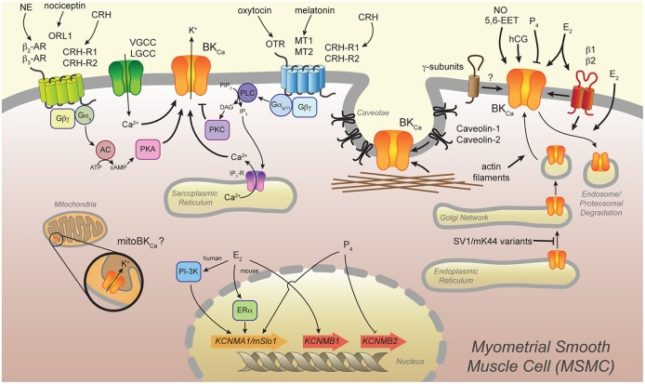Our overall goal is to define the mechanisms by which the uterus remains quiescent and non-contractile throughout pregnancy. Ion channels in the uterine smooth muscle (the myometrium) play important roles in this regulation by controlling these cells’ membrane potentials. In particular, potassium channels are key to both setting resting membrane potential and attenuating excitation in smooth muscle cells. One channel in particular, the large conductance voltage- and Ca2+-activated potassium (BK) channel, is widely expressed in several smooth muscle cell types and maintains smooth muscle relaxation by buffering Ca2+-mediated cell depolarization.

To understand how the BK channel modulates smooth muscle cell excitability during pregnancy, we are investigating how the localization and activity of BK channels alter myometrial excitability and uterine contractility during pregnancy. Proteomic studies have identified novel binding partners of the BK channel in multiple tissues and species, but how these proteins affect BK channel characteristics has not been fully determined. We seek to fill this important knowledge gap by:
- Determining how intrinsic properties of BK alter its association with modulatory proteins – link to publication »
- Defining the dynamics of BK binding to modulatory proteins in the myometrium during pregnancy – link to publication »
- Determining how these modulatory proteins alter channel function and myometrial excitability – link to publication »